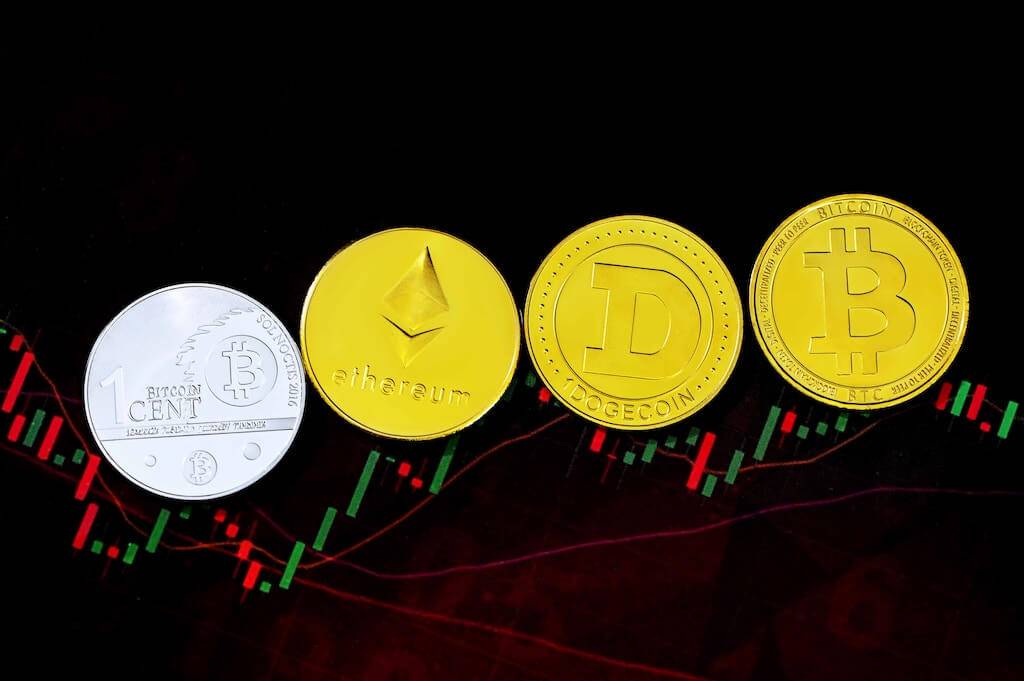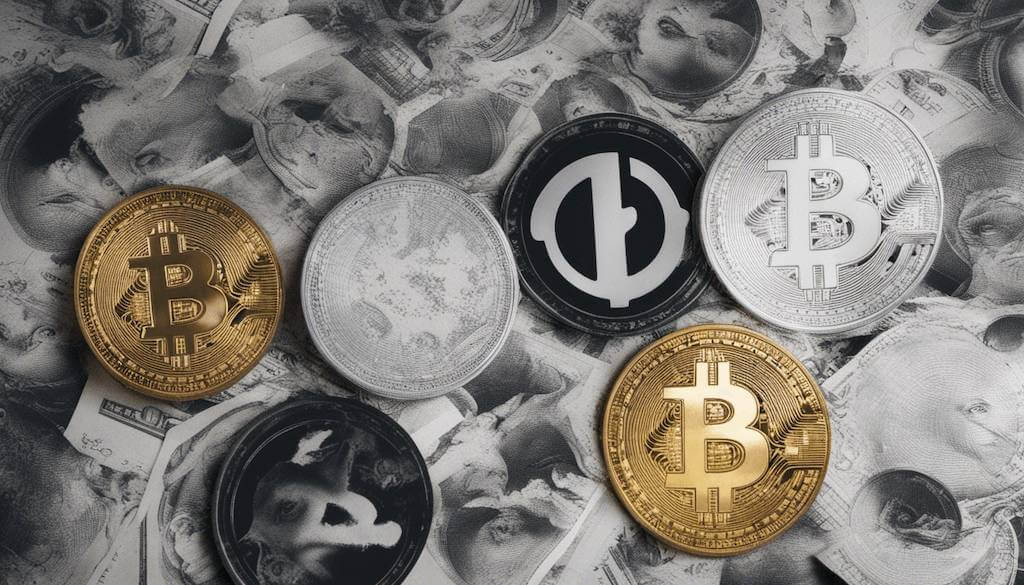Gain valuable insights into the current cryptocurrency market trends in 2023. Explore key players, market size, growth, and the impact of regulations.
In “Understanding the Current Cryptocurrency Market Trends in 2023,” you will gain valuable insights into the latest analysis of the cryptocurrency market. This article provides individuals with a comprehensive overview of the trends shaping the industry in the year 2023. Whether you are a seasoned investor or just beginning to explore the world of cryptocurrencies, this article offers invaluable knowledge and understanding of the ever-evolving market landscape.
Market Overview
Introduction
The cryptocurrency market has experienced significant growth and evolution in recent years. As a decentralized digital asset, cryptocurrencies have gained popularity due to their potential for high returns and revolutionary technology. This article will provide a comprehensive overview of the current cryptocurrency market, including key players, market size and growth, market trends, and the impact of the regulatory environment on the market.
Key Players
The cryptocurrency market is dominated by a few key players who have established themselves as leaders in the industry. Some of the most prominent cryptocurrencies include Bitcoin, Ethereum, Ripple, Litecoin, and Cardano. These cryptocurrencies have gained widespread recognition and have become household names in the world of digital assets. Each cryptocurrency offers unique features and aims to solve different problems in the financial industry.
Market Size and Growth
The cryptocurrency market has witnessed tremendous growth in recent years. According to the latest market analysis, the market is projected to reach a valuation of trillions of dollars by 2023. The increasing adoption of cryptocurrencies by individuals, businesses, and even institutions has contributed to this rapid growth. Moreover, the introduction of blockchain technology has revolutionized the way financial transactions are conducted, further driving the market’s expansion.
Market Trends
Several notable trends are shaping the current cryptocurrency market. One trend is the rise of decentralized finance (DeFi), which aims to create a more inclusive and accessible financial system through the use of blockchain technology. DeFi platforms allow individuals to engage in various financial activities such as lending, borrowing, and trading without the need for intermediaries, such as banks. This trend has gained considerable traction and is expected to continue growing in the future.
Another trend in the cryptocurrency market is the increasing popularity of non-fungible tokens (NFTs). NFTs are unique digital assets that represent ownership of a particular item or piece of content, such as artwork or music. This concept has gained widespread attention in the art and entertainment industries, with high-profile artists and celebrities launching their NFT collectibles. The rise of NFTs has sparked both excitement and concerns about the future of digital ownership and intellectual property rights.
Popular Cryptocurrencies
Bitcoin
Bitcoin is the pioneering cryptocurrency that was introduced in 2009 by an anonymous person or group of people known as Satoshi Nakamoto. It remains the most valuable and widely recognized cryptocurrency on the market. Bitcoin operates on a decentralized network called the blockchain, which records all transactions and maintains the security and integrity of the cryptocurrency. Its limited supply and decentralized nature have contributed to its status as a store of value and a potential hedge against traditional financial systems.
Ethereum
Ethereum is a decentralized platform that enables the development of smart contracts and decentralized applications (DApps). It introduced the concept of programmable blockchain, allowing developers to create and deploy their applications on its network. Ethereum’s native cryptocurrency, Ether (ETH), serves as the fuel for executing smart contracts and participating in the Ethereum ecosystem. Its versatility and active developer community have made it a popular choice for many blockchain projects.
Ripple
Ripple is a blockchain-based payment protocol designed to facilitate fast and low-cost international money transfers. Unlike Bitcoin and Ethereum, Ripple’s XRP token is not mined but issued directly by the company. It aims to provide efficient cross-border transactions by leveraging its consensus algorithm and network of financial institutions. Ripple’s technology has gained significant attention from banks and payment processors seeking to enhance their remittance services and improve liquidity management.
Litecoin
Litecoin is often referred to as the silver to Bitcoin’s gold. Created in 2011 by Charlie Lee, a former Google engineer, Litecoin shares many similarities with Bitcoin but with some technical differences. It uses a different hashing algorithm, called Scrypt, which allows for faster block generation and transaction confirmation times. Litecoin has gained popularity for its faster transaction speed and lower fees compared to Bitcoin, making it a desirable option for everyday transactions.
Cardano
Cardano is a blockchain platform that aims to enable the development of secure and scalable decentralized applications. It is known for its focus on academic research and peer-reviewed development. Cardano’s native token, ADA, allows holders to participate in the platform’s governance and decision-making processes. The project has gained attention for its commitment to sustainability, interoperability, and scalability, positioning itself as a potential competitor to Ethereum.
Market Volatility
Causes of Volatility
The cryptocurrency market is notorious for its high volatility, with prices fluctuating rapidly within short periods. There are several factors contributing to this volatility. First, the relatively small market size of cryptocurrencies compared to traditional financial markets makes them more susceptible to price manipulation by whales or large investors. Additionally, the lack of regulatory oversight and uncertainties surrounding the technology itself can lead to increased volatility.
Moreover, external market factors, such as global economic conditions and geopolitical events, can influence the price of cryptocurrencies. Negative news or regulatory actions can cause panic selling, driving prices down, while positive news can lead to speculative buying, pushing prices up. Lastly, the speculative nature of cryptocurrencies, with many investors buying and selling based on short-term price movements, further exacerbates volatility in the market.
Impact on Investors
The high volatility of the cryptocurrency market can have significant implications for investors. On one hand, the potential for high returns is attractive to those seeking investment opportunities. Cryptocurrencies have generated substantial profits for early adopters and savvy traders during periods of bull markets. However, the flip side of this volatility is the risk of substantial losses. Market downturns can wipe out investments in a short period, leading to financial stress and emotional turmoil for investors.
Strategies for Mitigating Risks
To mitigate the risks associated with market volatility, investors should adopt several strategies. Diversification is a key strategy to spread risk across different asset classes, including cryptocurrencies, traditional stocks, and bonds. This ensures that losses in one investment can be offset by gains in others. Furthermore, long-term investing and dollar-cost averaging, where investors regularly invest a fixed amount regardless of market conditions, can help smooth out the impact of short-term price fluctuations.
It is also important for investors to conduct thorough research and due diligence before investing in any cryptocurrency. This includes understanding the technology behind the cryptocurrency, evaluating its use cases and potential for adoption, and assessing the credibility and reputation of the project’s team. Furthermore, setting realistic investment goals and risk tolerance levels can help investors make informed decisions and avoid succumbing to emotional trading during volatile market conditions.
Regulatory Environment
Government Regulations
The regulatory landscape for cryptocurrencies varies significantly across different jurisdictions. Some governments have embraced cryptocurrencies and blockchain technology, recognizing their potential for innovation and economic growth. These jurisdictions have implemented regulations that provide clarity and legal frameworks for businesses and individuals operating in the cryptocurrency space. On the other hand, several countries have taken a more cautious approach, implementing stricter regulations to mitigate risks related to money laundering, fraud, and investor protection.
Central Bank Digital Currencies
Central Bank Digital Currencies (CBDCs) are digital representations of fiat currencies issued by central banks. These CBDCs aim to combine the benefits of cryptocurrencies, such as faster and cheaper transactions, with the stability of traditional fiat currencies. Several central banks, including the People’s Bank of China, the European Central Bank, and the Bank of England, are actively exploring the development and implementation of CBDCs. The introduction of CBDCs may have significant implications for the cryptocurrency market, potentially impacting its growth and adoption.
International Cooperation
Given the global nature of the cryptocurrency market, international cooperation and coordination among regulatory bodies are crucial. Several international organizations, including the Financial Action Task Force (FATF) and the International Organization of Securities Commissions (IOSCO), are working to establish standards and guidelines for regulating cryptocurrencies. The goal is to create a harmonized regulatory framework that addresses common concerns and promotes investor protection while fostering innovation and the growth of the market.
Impact on Market Trends
The regulatory environment plays a significant role in shaping market trends in the cryptocurrency industry. Clear and favorable regulations can provide certainty and attract institutional investors and traditional financial institutions to the market. This can lead to increased liquidity, improved market infrastructure, and broader adoption of cryptocurrencies. Conversely, strict regulations or regulatory uncertainty can hamper market growth and innovation, leading to a more fragmented and niche market.
Decentralized Finance (DeFi)
Introduction to DeFi
Decentralized finance, or DeFi, refers to the use of blockchain technology and smart contracts to recreate traditional financial systems and services in a decentralized and permissionless manner. DeFi platforms aim to eliminate the need for intermediaries, such as banks, and provide individuals with greater control and access to financial services. Key components of DeFi include decentralized exchanges, lending platforms, yield farming, and synthetic assets.
Growth and Importance
DeFi has experienced exponential growth in recent years, with the total value locked in DeFi protocols surpassing billions of dollars. The appeal of DeFi lies in its potential to democratize finance and provide financial services to those who are unbanked or underbanked. By leveraging blockchain technology, DeFi platforms offer borderless and accessible financial products, including lending and borrowing, decentralized trading, and high-yield farming opportunities.
Moreover, DeFi has the potential to disrupt and reshape traditional financial systems by challenging the dominance of centralized institutions. The ability to earn passive income through lending or providing liquidity has attracted many participants to the DeFi space. This growth has also led to increased innovation in the development of new DeFi protocols and financial instruments.
Challenges and Opportunities
While DeFi presents numerous opportunities, it also faces several challenges. One of the main challenges is scalability, as the current blockchain infrastructure may not be capable of handling the transaction volume required to support widespread adoption. Additionally, the speed and cost of transactions on certain DeFi platforms can be prohibitive for users, especially during periods of high network congestion.
Furthermore, the complexity and technical nature of DeFi may act as barriers to entry for individuals who are not familiar with blockchain technology. The risk of smart contract vulnerabilities and hacking incidents is also a concern and underscores the importance of robust security measures and auditing processes.
However, the challenges present opportunities for innovation and improvement. Solutions such as layer-two scaling solutions and cross-chain compatibility are being developed to address scalability issues. User-friendly interfaces and better educational resources are being created to enhance accessibility and usability. Overall, the growth and importance of DeFi present exciting possibilities for the future of finance.
Future of DeFi
The future of DeFi looks promising, as more individuals and institutions recognize the transformative potential of decentralized financial systems. Regulatory clarity and the integration of DeFi into traditional financial systems could further accelerate its growth and adoption. Additionally, advancements in blockchain technology, such as the development of more efficient and scalable consensus mechanisms, may address the scalability challenges currently faced by DeFi platforms.
Moreover, the expansion of DeFi beyond financial services is a possibility. The concept of decentralized autonomous organizations (DAOs), which are governed by smart contracts and operate without central authorities, has gained attention. DAOs have the potential to revolutionize governance structures and decision-making processes across various industries, fostering greater transparency and accountability.
However, challenges such as regulatory compliance, security, and scalability must be addressed for DeFi to reach its full potential. Ongoing research and development, collaboration among industry participants, and the establishment of best practices will be crucial in shaping the future of DeFi.
NFTs (Non-Fungible Tokens)
Explanation of NFTs
Non-fungible tokens (NFTs) are unique digital assets that represent ownership or proof of authenticity for a specific item or piece of content. Unlike cryptocurrencies such as Bitcoin or Ethereum, which are fungible and can be exchanged on a one-to-one basis, NFTs are indivisible and cannot be exchanged on an equal basis. Each NFT has a distinct value and unique properties that make it valuable and irreplaceable.
NFTs are typically built on blockchain technology, often utilizing the Ethereum blockchain and its smart contract capabilities. This provides a secure and transparent way to verify ownership and track the provenance of NFTs. The popularity of NFTs has grown rapidly in recent years, driven by the ability to tokenize and sell digital art, collectibles, virtual real estate, and even tweets.
Rise in Popularity
The rise in popularity of NFTs can be attributed to several factors. First, NFTs provide artists, creators, and content owners with a new way to monetize their digital creations. By tokenizing their work as NFTs, artists can sell their pieces directly to collectors, potentially bypassing traditional intermediaries and securing a larger share of the proceeds. This has opened up new revenue streams and empowered artists to reach a global audience.
Second, the exclusivity and scarcity associated with NFTs have sparked a sense of ownership and status among collectors. Owning a unique digital artwork or collectible that is authenticated on the blockchain has become a form of digital bragging rights. This social and cultural aspect has contributed to the market’s growth and the willingness of collectors to pay hefty sums for NFTs.
Applications in Various Industries
NFTs have found applications in various industries beyond art and collectibles. The music industry, for example, has seen artists release limited-edition NFTs that provide access to exclusive content, concert tickets, or other VIP experiences. NFTs have also been used in the gaming industry to represent in-game assets, enabling players to trade and transfer ownership of virtual items across different platforms.
Furthermore, NFTs have the potential to revolutionize the ownership and licensing of intellectual property. Content creators can tokenize their work, allowing for transparent and traceable licensing agreements. Moreover, NFTs can enable royalty payments to be automatically distributed to creators whenever their work is sold or used, ensuring fair compensation and reducing the need for intermediaries.
Concerns and Limitations
Despite the growing popularity of NFTs, there are concerns and limitations that need to be addressed. One concern is the environmental impact of NFTs, especially those built on blockchain networks that rely on energy-intensive consensus mechanisms, such as proof-of-work. The carbon footprint associated with certain NFT transactions has raised questions about the sustainability of the market and the need for more eco-friendly solutions.
Another concern is the potential for fraud and copyright infringement. Due to the decentralized nature of blockchain technology, it can be challenging to verify the authenticity and originality of NFTs. There have been instances where plagiarized or unauthorized content has been tokenized and sold as NFTs, leading to legal disputes and reputational damage.
Furthermore, the volatility of the NFT market raises concerns about price manipulation and unsustainable valuations. The hype surrounding certain NFTs has led to speculative buying, with prices reaching astronomical levels. However, the risk of a market correction or bubble burst remains, potentially leading to significant financial losses for investors.
Overall, NFTs have the potential to reshape various industries and empower artists and creators. However, addressing concerns related to environmental impact, authenticity, and market stability will be crucial for the long-term sustainability and success of the NFT market.
Cryptocurrency Exchanges
Types of Exchanges
Cryptocurrency exchanges are platforms that allow users to buy, sell, and trade cryptocurrencies. There are several types of exchanges, each with its own features and target audience. Centralized exchanges (CEX) are the most common type and operate as intermediaries between buyers and sellers. They hold custody of users’ funds and facilitate transactions on their platforms. Some popular centralized exchanges include Binance, Coinbase, and Kraken.
Decentralized exchanges (DEX) operate on blockchain networks and allow users to trade cryptocurrencies directly with each other without the need for intermediaries. DEXs utilize smart contracts to automate trading and maintain the security and integrity of transactions. Examples of decentralized exchanges include UniSwap, SushiSwap, and PancakeSwap.
Another type of exchange is the peer-to-peer (P2P) exchange, where users can directly interact and trade with each other. P2P exchanges connect buyers and sellers through their platforms and provide escrow services to secure the transaction until both parties are satisfied. LocalBitcoins and Paxful are well-known P2P exchanges.
Security and Trust
Security and trust are paramount considerations when choosing a cryptocurrency exchange. Centralized exchanges often implement various security measures, including two-factor authentication, cold storage for funds, and robust encryption protocols. However, the centralized nature of these exchanges makes them susceptible to hacking attacks and internal fraud. Therefore, it is essential to choose exchanges with a strong track record of security and transparency.
Decentralized exchanges offer enhanced security and privacy since transactions occur directly on the blockchain. However, users must exercise caution when interacting with smart contracts and ensure that they are using reputable DEX platforms. Additionally, users must also be aware of potential phishing scams and take necessary precautions to protect their private keys and access to their wallets.
P2P exchanges rely on reputation systems and user ratings to establish trust between buyers and sellers. However, users should still conduct thorough due diligence on potential trading partners and use escrow services whenever possible. Researching the exchange’s reputation and user reviews can provide insights into its trustworthiness and security measures.
Regulation and Compliance
Cryptocurrency exchanges are subject to varying degrees of regulation and compliance depending on the jurisdiction they operate in. Some countries have implemented regulatory frameworks specifically for cryptocurrency exchanges, requiring them to register and comply with anti-money laundering (AML) and know-your-customer (KYC) regulations. These regulations aim to prevent illegal activities such as money laundering and terrorist financing.
Compliant exchanges typically require users to undergo a verification process, providing identification documents and proof of address. This helps ensure the legitimacy of users and creates a paper trail in case of any illicit activities. Furthermore, exchanges must implement stringent security measures, including regular audits and risk assessments, to maintain compliance and protect customer funds.
It is advisable for users to choose exchanges that prioritize regulatory compliance and have robust security measures in place. This helps protect users’ personal information and mitigates the risk of fraudulent activities. Additionally, following relevant regulations and reporting any suspicious activities is crucial in promoting a safe and trustworthy cryptocurrency ecosystem.
User Experience and Innovation
User experience and innovation are key differentiators among cryptocurrency exchanges. Centralized exchanges often prioritize user-friendly interfaces, offering intuitive navigation and a range of trading tools and features. They also provide liquidity through market-making services, ensuring a seamless trading experience. Some exchanges offer mobile apps for convenience and accessibility.
Decentralized exchanges are known for their permissionless and censorship-resistant nature. While user interfaces may be less polished compared to centralized exchanges, they offer the benefits of transparency and user control. Innovative DEX platforms are continuously developing new features and protocols to address scalability issues and improve user experience.
Cryptocurrency exchanges, both centralized and decentralized, play a crucial role in the liquidity and accessibility of cryptocurrencies. Advancements in user experience, security, and innovation are expected to continue shaping the landscape of cryptocurrency exchanges, providing users with enhanced trading tools and features.
Institutional Adoption
Increasing Interest from Institutions
In recent years, there has been a growing interest from institutional investors in the cryptocurrency market. Traditional financial institutions, including hedge funds, asset managers, and banks, have started to recognize the potential of cryptocurrencies as an investment asset class. This shift in sentiment can be attributed to several factors, including the increasing acceptance and recognition of cryptocurrencies, as well as the potential for high returns.
The entry of institutional investors has brought greater credibility and liquidity to the market. Institutional adoption has also fueled the development of financial products and services tailored to institutional investors, such as cryptocurrency custody solutions, institutional-grade trading platforms, and derivative products.
Impact on Market Trends
The increasing participation of institutions in the cryptocurrency market has had a profound impact on market trends. Large institutional investors have the potential to drive both positive and negative shifts in the market through their investment decisions. Their entry into the market can result in increased demand and price appreciation for certain cryptocurrencies.
Moreover, institutional investors often bring a different investment approach compared to individual retail investors. They tend to focus on long-term investment strategies and conduct thorough due diligence before entering the market. This shift towards more professional and sophisticated investment strategies has contributed to the maturation of the cryptocurrency market.
Institutional Investment Strategies
Institutional investors employ various investment strategies when entering the cryptocurrency market. Some institutions opt for direct investments in cryptocurrencies, holding them as long-term investments on their balance sheets. This approach can be seen as a bet on the long-term potential and adoption of cryptocurrencies.
Other institutional investors may choose to invest indirectly in cryptocurrencies through investment vehicles such as exchange-traded funds (ETFs) or trusts. These investment products allow institutions to gain exposure to cryptocurrencies without directly owning the underlying assets. ETFs, in particular, have gained attention as they offer the benefits of liquidity, diversification, and regulatory oversight.
Additionally, some institutions engage in cryptocurrency trading and other active investment strategies. This can involve leveraging quantitative models, arbitrage opportunities, and market research to generate alpha and outperform the market. However, active trading strategies also entail higher risk and require specialized knowledge and resources.
Potential Challenges
Despite the increasing interest and adoption from institutions, challenges remain for their broader participation in the cryptocurrency market. Regulatory uncertainties and concerns around investor protection and market manipulation have been cited as barriers to entry for institutions. Therefore, regulatory clarity and robust frameworks will be crucial in attracting more institutional capital.
Additionally, the potential for market manipulation and the lack of reliable price discovery mechanisms are ongoing concerns. The relatively small market size and liquidity of cryptocurrencies compared to traditional asset classes can create volatility and impact institutional investment decisions.
Lastly, cybersecurity risks and the safeguarding of digital assets continue to be significant challenges for institutions. The secure storage and custody of cryptocurrencies require specialized infrastructure and expertise. Institutions must implement robust security measures and adhere to best practices to protect their assets and meet regulatory requirements.
Addressing these challenges will be essential to further bridging the gap between traditional finance and the cryptocurrency market. As regulatory frameworks evolve, market infrastructure improves, and risk mitigation measures strengthen, institutional adoption is expected to continue growing.
Green Cryptocurrencies
Introduction to Green Cryptocurrencies
Green cryptocurrencies, also known as sustainable or eco-friendly cryptocurrencies, aim to address the environmental concerns associated with traditional cryptocurrencies, particularly those built on energy-intensive proof-of-work (PoW) consensus mechanisms. These cryptocurrencies utilize different consensus mechanisms or energy sources to minimize their carbon footprint and promote sustainability.
The environmental impact of cryptocurrencies, particularly Bitcoin, has come under scrutiny due to the massive energy consumption required for mining and transaction processing. Green cryptocurrencies seek to mitigate these concerns by embracing renewable energy sources, implementing more energy-efficient consensus mechanisms, or using innovative approaches to reduce energy consumption.
Environmental Concerns
Traditional cryptocurrencies, such as Bitcoin, rely on PoW algorithms that require vast amounts of computational power and electricity to secure the network. This energy consumption contributes to carbon emissions and puts a strain on global energy resources. The overwhelming reliance on non-renewable energy sources, particularly coal, raises concerns about the sustainability and environmental impact of cryptocurrencies.
The increasing adoption of cryptocurrencies globally has raised questions about the long-term environmental consequences. The carbon footprint of cryptocurrency mining has been compared to that of entire countries, leading to calls for greener alternatives and more sustainable practices within the industry. Addressing these environmental concerns is crucial for the long-term viability of cryptocurrencies and to align with broader sustainability initiatives.
Sustainable Solutions
Green cryptocurrencies present sustainable solutions to address the environmental concerns associated with traditional cryptocurrencies. One approach is to transition to more energy-efficient consensus mechanisms, such as proof-of-stake (PoS). PoS relies on the ownership of a certain number of cryptocurrency tokens to validate transactions and secure the network. This requires significantly less energy compared to PoW algorithms.
Another approach is the integration of renewable energy sources into the cryptocurrency mining process. Some green cryptocurrencies are directly involved in renewable energy projects, such as solar or wind farms, allowing miners to use clean energy for their operations. This not only reduces the carbon footprint but also supports the development of sustainable energy infrastructure.
Additionally, blockchain-based carbon offset projects have emerged to address the environmental impact of cryptocurrencies. These projects aim to neutralize the carbon emissions generated by cryptocurrency transactions and mining by investing in carbon credits or supporting initiatives that reduce greenhouse gas emissions.
Market Response and Future
The market response to green cryptocurrencies has been positive, with increased interest from environmentally conscious investors and institutions. The integration of sustainable practices aligns with global efforts to combat climate change and promote responsible investing. Furthermore, green cryptocurrencies serve as an attractive alternative for investors concerned about the environmental impact of traditional cryptocurrencies.
Moving forward, the future of green cryptocurrencies looks promising. The development and adoption of more energy-efficient consensus mechanisms, such as PoS, are expected to gain traction. Technological advancements and innovations in energy storage and renewable energy generation are likely to reduce costs and increase the scalability of green cryptocurrency operations.
Moreover, regulatory frameworks promoting sustainable initiatives and endorsing green cryptocurrencies could further propel their adoption. Some countries have already started implementing regulations to encourage the use of renewable energy in cryptocurrency mining, providing incentives for miners to adopt more sustainable practices.
By addressing environmental concerns and embracing sustainable solutions, green cryptocurrencies are poised to play a significant role in the transition towards a greener and more sustainable future.
Cryptocurrency Wallets and Security
Types of Wallets
Cryptocurrency wallets are digital tools that allow users to store, manage, and transfer their cryptocurrencies. There are several types of wallets, each offering different levels of security and convenience.
Software wallets are applications that can be installed on computers, smartphones, or tablets. They store users’ private keys, allowing them to access and manage their cryptocurrencies. Software wallets can be further categorized into desktop wallets, mobile wallets, and online wallets. Desktop wallets offer increased security as they are stored on users’ devices, while online wallets provide more convenience but are considered less secure due to the potential risks of hacking or phishing attacks.
Hardware wallets are physical devices specifically designed to store cryptocurrency private keys offline. They provide an added layer of security by keeping the private keys isolated from potential online threats. Hardware wallets are typically immune to malware or hacking attacks targeting users’ computers or smartphones. However, they require additional precautions, such as ensuring the device is purchased from a reputable source and regularly updating the firmware.
Paper wallets are physical documents that contain the user’s public and private keys. They are considered offline storage options since they are not susceptible to hacking or malware. However, paper wallets require users to manually transfer their cryptocurrencies to and from the wallet, which can be cumbersome and potentially prone to human error.
Security Best Practices
Ensuring the security of cryptocurrency wallets is crucial to protect users’ funds from unauthorized access or theft. There are several best practices that users should follow to enhance wallet security.
First and foremost, users must choose reputable wallet providers and ensure they only download software or apps from official sources. Fake or malicious wallets may aim to steal users’ private keys or gain unauthorized access to their funds.
Creating strong, unique passwords for wallets is essential. Passwords should be complex, incorporating a combination of uppercase and lowercase letters, numbers, and symbols. Additionally, enabling two-factor authentication (2FA) adds an extra layer of security by requiring users to provide a second verification method, such as a code from a mobile app, in addition to their password.
Regularly updating wallets and their associated software is crucial for staying protected against potential vulnerabilities or security flaws. Developers often release updates that improve security measures and address known bugs or weaknesses.
Backup mechanisms are essential to prevent loss of funds due to hardware failure or accidental deletion. Users should create secure backups of their wallet’s recovery phrase or private keys, storing them in separate physical locations or utilizing encrypted digital storage options.
Multi-factor Authentication
Multi-factor authentication (MFA) adds an additional layer of security to cryptocurrency wallets. MFA requires users to provide multiple forms of verification, typically a combination of something they know (such as a password), something they have (such as a mobile device), or something they are (such as biometric data).
Using MFA helps protect against unauthorized access in case a user’s password or private key is compromised. Popular forms of MFA include mobile apps that generate one-time verification codes, fingerprint or facial recognition, or hardware tokens.
Enabling MFA on wallets is highly recommended since it significantly reduces the risk of unauthorized access or theft of funds. Users should follow wallet providers’ instructions to set up MFA and ensure they keep backup options or recovery codes in a secure location.
Emerging Technologies
Emerging technologies have the potential to further enhance the security of cryptocurrency wallets. For example, biometric authentication, such as fingerprint or facial recognition, can provide a more convenient and secure method of accessing wallets.
Moreover, advancements in cryptography and secure enclave technologies can help protect the integrity of private keys and prevent unauthorized access. Secure enclaves are hardware-based security features that provide isolated and trusted execution environments, ensuring the confidentiality and integrity of sensitive data.
Blockchain-based identity solutions and decentralized authentication protocols are being developed to reduce the reliance on centralized authentication servers and credentials. These technologies aim to provide users with more control over their digital identities and enhance security by eliminating single points of failure.
As the cryptocurrency industry continues to evolve, wallet providers will need to stay at the forefront of emerging technologies and best practices to ensure the security and trustworthiness of their platforms. Users, on the other hand, should remain vigilant, follow security guidelines, and stay informed about the latest developments in wallet security.



































